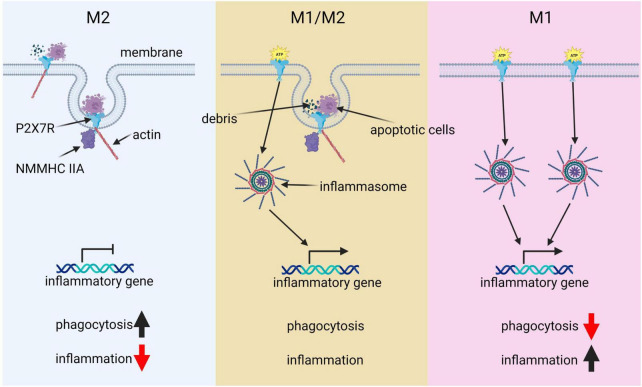FIGURE 2.
The pivotal role of P2 × 7R in microglial polarization. This diagram illustrates the key role of P2 × 7R in shaping microglial polarization states and its influence on immune responses. Under normal conditions, P2 × 7R interacts with extracellular debris such as apoptotic cells, as well as intracellular cytoskeleton components like actin and NMMHCIIA. This interaction induces phagocytic activity, resulting in minimal inflammation and predominance of the M2 state. However, transient ATP stimulation alters this balance: P2 × 7R not only drives phagocytosis but also gets activated by ATP, triggering downstream immunological inflammasome pathways and promoting inflammatory responses, thereby leading to a balance between M1 and M2 states. In a pathological condition, chronic ATP binding and activation of P2 × 7R shifts the cell primarily toward a pro-inflammatory and phagocytosis-suppressed phenotype, characteristic of the M1 state.

